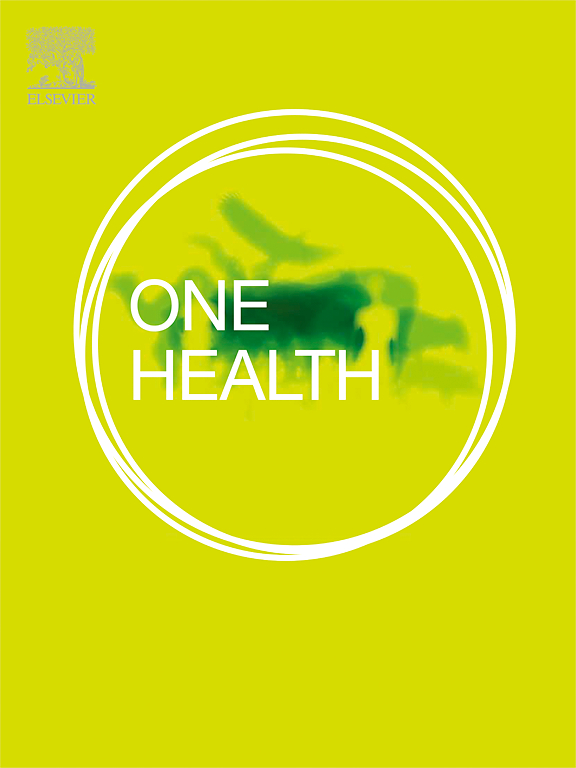高血清学屏障可能有助于限制甲型流感病毒在猪和人之间的传播
IF 4.5
2区 医学
Q1 INFECTIOUS DISEASES
引用次数: 0
摘要
甲型流感病毒(IAV)在人类和猪中传播,双向传播可能推动病毒进化。尽管频繁的接触和遗传兼容性,观察到的跨物种传播仍然很少,这表明存在未被探索或鲜为人知的障碍。本研究调查了德国人猪界面禽流感病毒的传播动力学和限制机制。我们通过RT-qPCR和全基因组测序分析了来自135个猪场的3070只猪和333只人鼻拭子。同时,我们进行了血清学调查:1)儿童(城市,无猪接触)血清中抗循环猪流感病毒的抗体,2)猪血清中抗人适应猪流感病毒的抗体。尽管猪IAV毒株携带人畜共患病倾向遗传标记(MxA抗性),但分子监测只发现了一起人畜共患病事件和散发性人畜共患病(主要发生在儿童中)。血清学上,未接触猪的城市儿童对猪流感病毒表现出明显的中和活性,而猪血清中含有对人流感病毒株的中和抗体。预先存在的交叉反应性免疫——在两个物种中都有意想不到的抗体流行——比单独的遗传因素造成了更复杂的物种间屏障。这种血清学“屏障”可能严重限制人与猪之间的IAV传播,重塑我们对人畜共患风险的理解。本文章由计算机程序翻译,如有差异,请以英文原文为准。
High serological barriers may contribute to restricted Influenza-A-virus transmission between pigs and humans
Influenza A viruses (IAV) circulate in both humans and pigs, with bidirectional transmission potentially driving viral evolution. Despite frequent contact and genetic compatibility, observed cross-species transmission remains rare, suggesting the presence of unexplored or little-known barriers. The study investigated transmission dynamics and mechanisms restricting IAV spread at the human-swine interface in Germany. We analyzed 3070 porcine and 333 human nasal swabs from 135 swine farms via RT-qPCR and full-genome sequencing. Concurrently, we conducted serological surveys: 1) Children's sera (urban, no pig contact) for antibodies against circulating swine IAV, and 2) Swine sera for antibodies against human-adapted IAV. Molecular surveillance identified only one zooanthroponosis event and sporadic anthropozoonosis (primarily in children) despite swine IAV strains carrying zoonotic-propensity genetic markers (MxA resistance). Serologically, urban children without pig exposure exhibited marked neutralizing activity against swine IAV, whereas swine sera contained neutralizing antibodies against human IAV strains. Pre-existing cross-reactive immunity—evidenced by unexpected antibody prevalence in both species—creates a more complex interspecies barrier than genetic factors alone. This serological “shield” may critically limit IAV transmission between humans and pigs, reshaping our understanding of zoonotic risk.
求助全文
通过发布文献求助,成功后即可免费获取论文全文。
去求助
来源期刊

One Health
Medicine-Infectious Diseases
CiteScore
8.10
自引率
4.00%
发文量
95
审稿时长
18 weeks
期刊介绍:
One Health - a Gold Open Access journal.
The mission of One Health is to provide a platform for rapid communication of high quality scientific knowledge on inter- and intra-species pathogen transmission, bringing together leading experts in virology, bacteriology, parasitology, mycology, vectors and vector-borne diseases, tropical health, veterinary sciences, pathology, immunology, food safety, mathematical modelling, epidemiology, public health research and emergency preparedness. As a Gold Open Access journal, a fee is payable on acceptance of the paper. Please see the Guide for Authors for more information.
Submissions to the following categories are welcome:
Virology,
Bacteriology,
Parasitology,
Mycology,
Vectors and vector-borne diseases,
Co-infections and co-morbidities,
Disease spatial surveillance,
Modelling,
Tropical Health,
Discovery,
Ecosystem Health,
Public Health.
 求助内容:
求助内容: 应助结果提醒方式:
应助结果提醒方式:


